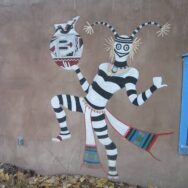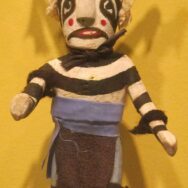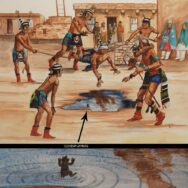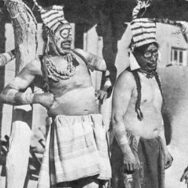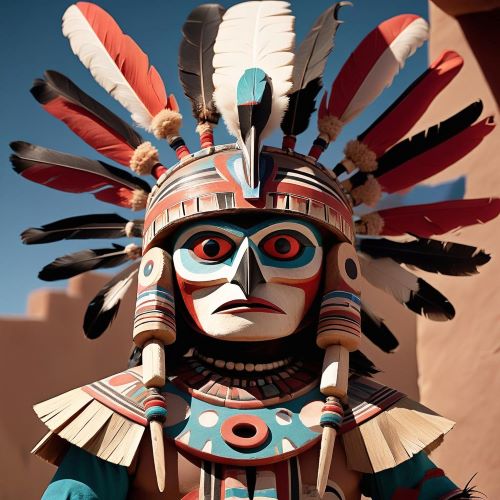Koshari : The Sacred Clown
Listen
At a glance
| Description | |
|---|---|
| Origin | Hopi Mythology |
| Classification | Spirits |
| Family Members | N/A |
| Region | United States of America |
| Associated With | Fertility, Rituals |
Koshari : The sacred Clown
Listen to “Koshari : The Sacred Clown” on Spreaker.
Koshari
Introduction
Koshari is a sacred clown who is commonly seen at Katsina ceremonies and he is a powerful figure in the community. At the divine ceremonies, the divine clowns are let loose at important religious events with a lot of physical and fun. These divine clowns have a long and noble tradition of behaving with extreme silliness.
The Koshari are both sacred and profane, and they are regarded as the father of Kachinas. Clowns are made to be funny and humiliating, and the carvers usually add their own styles into the making of the clown, depending on what they see as funny or humiliating.
Physical Traits
The image of the Koshari shows him wearing a skull cap that features black and white stripes. He also has corn husk horns sprouting from the top of his cap and also has black circles around his mouth and eyes. He usually covers himself with a loincloth and has leather boots. He also has dark bands around his legs and arms. His face is painted white with black circles around his mouth and eyes.
Family
There are various stories about Koshari’s origin. Most of these involve elements that are very important to the people, such as the sun, rain, and fertility. However, the power of the Koshari can also cause people to revere and fear him.
Other Names
The Koshari are known by various names depending on the area that they are being worshipped at. However, they are commonly known as Koshari or Koshare.
Powers and Abilities
If you are in the presence of a Koshari, you can usually hear him making noise with a drum and a rattle and is considered to have powers over fertility. He also has the dual role of being a societal organizer and a paranormal spirit. The Koshari’s performances are serious because they depict offensive and unacceptable behavior. The clown can also target any member of the audience. He has the important job of protecting cultural customs.
Modern Day Influence
The Koshari are considered powerful individuals who work to maintain a positive and religious atmosphere within their communities. For instance, the raven is the symbol of the Northwest Coast Indians’ clown and the Southwest has the coyote or the M’ii.
Related Images
Frequently Asked Questions
What is the meaning of the Hopi clown?
Hopi clowns aren’t goofy entertainers. They use humor, even naughtiness, to playfully enforce good behavior and community harmony. Their disruptions keep things light and remind everyone not to take themselves too seriously.
Who are the Hopi clown dancers?
The Hopi clown dancers are called Tsukut or Koshare, depending on the village on the mesas. These terms all refer to the same role within Hopi ceremonies.
What is the sacred clown religion?
Found in Hopi, Zuni, and other Pueblo cultures, these clowns (Tsukut, Koshare, etc.) use humor and social commentary to maintain harmony and community values.
What is the meaning of the clown kachina?
Hopi clown Kachinas (Tsukut/Koshare) are trickster teachers, not silly clowns. Their humor and antics gently remind folks of good behavior and social norms. They even disrupt ceremonies to keep things light and promote renewal.
Are kachinas male or female?
Kachina spirits aren’t limited by gender. They can be masculine, feminine, or something else entirely. Kachina dolls might show clothing or hairstyles hinting at gender, but the spirits themselves embody various natural forces and concepts.

